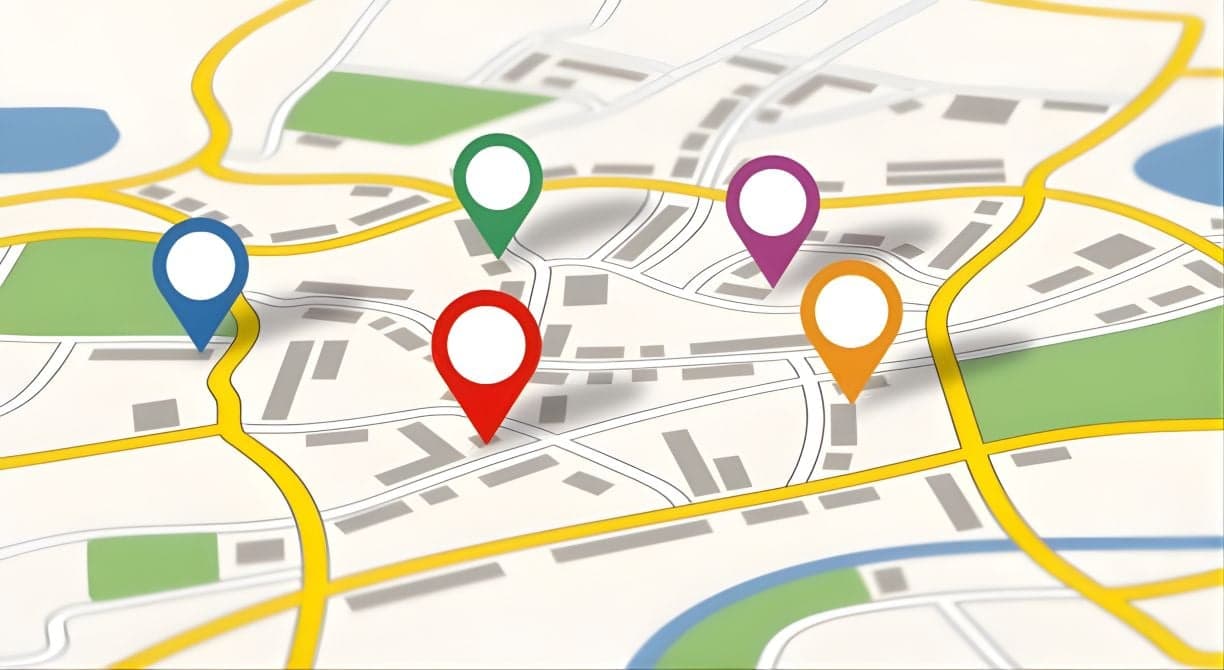Using your 2nd and 3rd pillar to finance a business acquisition

Introduction
Acquiring a business requires a significant personal contribution. In Switzerland, banks generally require between 20% and 40% of the purchase price in equity. Faced with this challenge, many buyers are unaware that they can mobilise their 2nd pillar (LPP) or their 3rd pillar to finance all or part of this contribution.
This financing method offers concrete advantages: access to substantial capital, reduced reliance on bank credit, and the possibility of realising an entrepreneurial project. But it also carries significant risks, particularly the reduction of your retirement provision and tax implications to anticipate.
Withdrawal conditions vary according to the type of pillar and your professional situation. The Swiss legal framework imposes strict rules to protect your pension provision whilst allowing the financing of self-employed activity. Understanding these mechanisms is essential before making a decision that will have long-term consequences.
This guide details the legal conditions, accessible amounts, advantages and risks, as well as the practical steps for using your pension provision in the context of a business acquisition.
📌 Summary (TL;DR)
The 2nd pillar (LPP) can be withdrawn to acquire a business if you establish yourself as self-employed, with amounts limited according to your age. The 3rd pillar A offers more flexibility for early withdrawal, whilst the 3rd pillar B is freely available but without tax advantage.
This financing reduces your banking dependence but decreases your retirement provision and results in taxation at the time of withdrawal. It is recommended to combine this source with other financing methods and to consult an expert to assess the overall impact on your situation.
📚 Table of contents
- Which pillars can be used to acquire a business?
- The 2nd pillar (LPP): withdrawal conditions for an acquisition
- The 3rd pillar: a flexible complement
- Advantages and risks of this financing method
- Tax implications of withdrawal
- Practical steps to withdraw your pension provision
- Combining pension provision and other financing sources
Which pillars can be used to acquire a business?
The Swiss pension system is based on three distinct pillars. The 2nd pillar (LPP) is the mandatory occupational pension for employees. The 3rd pillar A is the restricted individual pension provision, with tax advantages. The 3rd pillar B is the unrestricted pension provision, without legal constraints.
To finance a business acquisition, only the 2nd pillar and 3rd pillar A can be mobilised under strict conditions. The 3rd pillar B remains available without restrictions. These funds often constitute the personal contribution necessary to convince banks and give credibility to your acquisition project.
The 2nd pillar (LPP): withdrawal conditions for an acquisition
The withdrawal of the 2nd pillar for a business acquisition requires the exercise of self-employed activity as a main occupation. You must register in the commercial register and leave the mandatory LPP scheme. This step releases your accumulated retirement assets in the pension fund.
The available amount corresponds to your total or partial assets depending on your age. This source of financing significantly strengthens your banking application. It can be combined with other solutions such as bank credit.
Legal conditions to respect
For an early LPP withdrawal, you must exercise self-employed activity as a main occupation, not as a secondary activity. Registration in the commercial register is mandatory. You must also leave the mandatory LPP scheme as an employee.
A 12-month period after registration in the CR applies in certain cases. People close to retirement (from 58 years old) face additional restrictions. Consult your pension fund to know the specific conditions applicable to your situation.
Available amounts and limitations
You can withdraw the entirety of your retirement assets or a partial amount. Before 50 years old, total withdrawal is possible. After 50 years old, the amount is capped at half of the assets or the amount available at 50 years old.
Only one withdrawal is authorised every 5 years. The amount varies greatly according to your professional career and your age. Assets of 150,000 CHF constitute a significant personal contribution for a business acquisition. Check the exact amount with your pension fund.
The 3rd pillar: a flexible complement
The 3rd pillar A (restricted) can be withdrawn to finance self-employed activity, with conditions similar to the 2nd pillar but a simplified procedure. The amounts are generally more modest, depending on your past annual contributions.
The 3rd pillar B (unrestricted) is entirely available without particular conditions. It can serve as an immediate personal contribution supplement. These two pillars add to the 2nd pillar to constitute solid mixed financing and reduce your need for external credit.
3rd pillar A: early withdrawal for self-employed activity
The withdrawal of 3rd pillar A follows rules close to the 2nd pillar: main self-employed activity and mandatory CR registration. However, the administrative procedure is simpler and faster than with a pension fund.
The available amount depends on your past contributions. The annual ceilings are 7,056 CHF for employees (2024) and 35,280 CHF for self-employed persons without a 2nd pillar. The tax advantage on contributions makes this pillar attractive for preparing an acquisition project over several years.
3rd pillar B: total freedom but without tax advantage
The 3rd pillar B offers immediate availability without legal conditions. You can withdraw the funds at any time to finance your business purchase. No complex administrative procedures are required.
In return, this pillar does not benefit from any tax advantage on withdrawal or contribution. It remains useful as a personal contribution supplement, particularly if you do not meet the conditions for the 2nd pillar or 3rd pillar A. The amounts vary according to your personal savings.
Advantages and risks of this financing method
Using your pension provision for an acquisition presents concrete benefits but also significant risks. The personal contribution increases and strengthens your banking credibility. You avoid external debt on this part of the financing.
In return, you create a gap in your retirement provision. In case of acquisition failure, these funds are lost. Your death and disability cover also decreases. A balanced analysis is essential, particularly if you are considering an acquisition with a partner.
The concrete advantages
A high personal contribution considerably improves your bank financing application. Banks generally require 20 to 30% personal contribution for an acquisition. The 2nd pillar and the 3rd pillar allow you to reach this threshold.
You send a strong signal of confidence and personal commitment. No interest is payable on these equity funds, unlike a loan. Your borrowing capacity remains preserved for other financing needs. This strategy facilitates access to businesses available on the market.
The risks to anticipate
The withdrawal of your pension provision directly reduces your future retirement capital. This gap can be difficult to fill, especially after 50 years old. In case of entrepreneurial failure, you lose these funds without possibility of recovery.
Your cover in case of death or disability is also reduced. The impact on your family situation can be significant. The entrepreneurial risk must be assessed with lucidity. Compare this option with alternatives such as an acquisition with reduced contribution before deciding.
Tax implications of withdrawal
The pension provision withdrawal is taxed separately from ordinary income, at a reduced rate. The scale varies greatly according to the canton and the amount withdrawn. A withdrawal of 100,000 CHF can be taxed between 5% and 12% depending on your domicile.
As long as the funds remain in the pension provision, they are not subject to wealth tax. After withdrawal, they become taxable. Plan the timing of the withdrawal with a tax expert. Our partner network includes fiduciary companies specialised in business succession.
Practical steps to withdraw your pension provision
Start by registering in the commercial register as self-employed. Then contact your pension fund or 3rd pillar institution to request the withdrawal. Prepare the required documents: CR extract, articles of association, certificate of self-employed activity.
The processing time varies from 4 to 8 weeks depending on the institutions. Coordinate this step with your acquisition schedule and your negotiations with the seller. Expert support facilitates the process. Consult Leez partners for personalised support.
Combining pension provision and other financing sources
A mixed financing strategy optimises your chances of success. Use your pension provision as personal contribution (20-30%), supplement with bank credit (50-60%), and negotiate seller credit (10-20%). This structure balances risk and feasibility.
Do not stake the entirety of your pension provision on a single project. Keep a safety reserve. Diversify your financing sources to reduce your dependence on a single channel. Explore the businesses to acquire on Leez to identify opportunities suited to your financing capacity.
The 2nd and 3rd pillar represent accessible financing sources for acquiring a business in Switzerland. The 2nd pillar offers significant amounts but imposes strict conditions and social cover risks. The 3rd pillar A provides more flexibility for self-employed persons, whilst the 3rd pillar B remains totally free to use.
This solution allows you to reduce your dependence on bank credit and strengthen your personal contribution. But it also involves tax consequences and a direct impact on your retirement provision. The ideal remains to combine these funds with other sources: bank credit, seller credit or investor participation.
Before making your decision, consult a pension provision expert and a tax specialist to assess your situation precisely. Are you looking for a business to acquire? Discover the opportunities available on Leez and find the project that corresponds to your entrepreneurial objectives.


